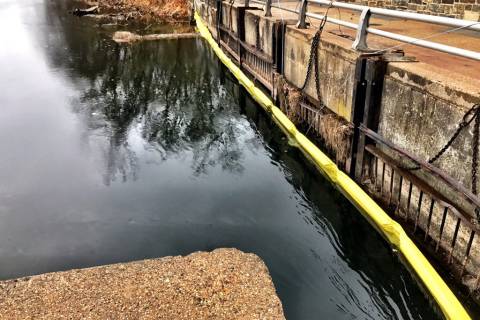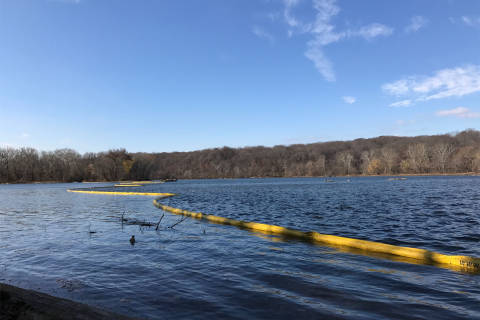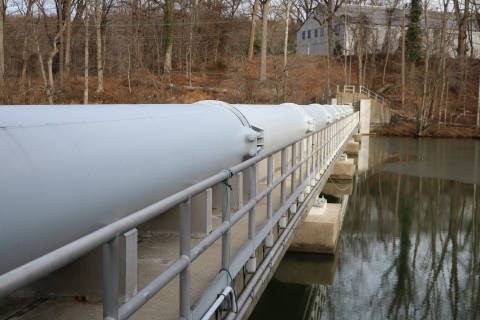WASHINGTON — Local water utilities say they were left off a special “unified command center” set up by Environmental Protection Agency to respond to an oil sheen on the Potomac River late last year and that the feds focused too much on determining who was responsible for the spill and not enough on protecting the D.C. water supply.
Regional water utilities are undertaking their own “after-action” report on the sheen to better prepare for future spills, according to a memo prepared ahead of a Wednesday meeting of the Metropolitan Washington Council of Governments.
“Of critical concern is that the EPA focused on finding the responsible party for the sheen and did not appear to recognize the risk to and the need to protect the region’s drinking water supplies,” the memo stated. “The drinking water utilities are concerned that this may have resulted in a delay in the release being contained and stopped.”
The Potomac sheen was first spotted Nov. 27 near Whites Ferry, Maryland, sparking an EPA response, which included diverting it with booms. Testing determined the substance was petroleum based and it was eventually traced to an NRG power station in Dickerson, Maryland.
The water utilities also installed protective booms in the Potomac and shut off access to intake valves to protect the water supply. But the companies were not included as part of EPA’s command center.
“At first, the issue was to identify what was going on, protect the river and, initially, we were not as involved as we eventually were on the water-treatment side,” Tom Jacobus, general manager of the Washington Aqueduct, told WTOP after the utilities’ presentation Wednesday. “There perhaps can be a notion that, well, a water treatment plant can treat anything that’s in the river.”
In fact, the utilities are not designed to treat oil-slickened waters and the only recourse is to shut off intake valves.
Lessons learned from November’s spill will aid future response efforts, Jacobus said.
“We’re discussing with EPA as a result of this spill how to react to a spill where drinking water utilities are involved,” he said. “The command center they set up was modeled on the idea that we were out there now to protect the river and the banks — not really anticipating water utilities downstream of the spill. That is now fully understood as a result of the episode, and we now believe that going forward [with] any future spills, we will have immediate understanding by all parties that the water utilities need to have immediate representation.”
November’s spill was relatively small and officials said at the time there was no threat to the public. But the incident raised concerns about the vulnerability of D.C.’s water infrastructure to more significant spills.
As WTOP has previously reported, a major Potomac spill could cripple the region’s water supply since the aqueduct only has between 24 to 48 hours of stored water supply if access to the Potomac were cut off.
WTOP has requested comment from the EPA.








